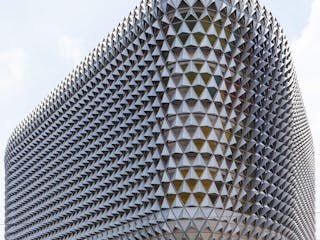Hey!
They say that goodbyes are the hardest, but frankly, I find it especially harder to start these introductory paragraphs of D&T. This is why I am extra efficient at getting to the point of this newsletter like I am gonna do right now.
Here’s the content from the promised land of our adventures:
“Oftentimes, coming into contact with good design makes me question whether something has been designed at all.” Google Design asks some of their researchers to comment on everyday objects on whether they are well designed or not. The website is slick and definitely is well designed unlike the orange that has been subjected to critique, which I’d say oranges have had a long time coming.
Gone are the days, when aesthetics and performance were the key drivers in the auto industry. With on-board UX systems like AutonoMIA, it is set to revolutionise the entire customer journey for the user. Designed by Pininfarina, it strives to provide a unique, personalized, intuitive and immersive in-car consumer experience in the new age of the automobile.
Guy Ligertwood, a UX designer working out in Australia gets an insightful look into some UX designers who only got into the field in their 40s.
Here’s the CEO’s testimony before the House Judiciary subcommittee on antitrust, commercial and administrative law representing Amazon. It’s a long and inspiring read. Here’s an ancillary link to the opening statements from reps of Amazon, Apple, Fb and Google ahead of their much-awaited antitrust hearings postponed to be finally held today.
Just.check.it.out.
Indian firm VWU is hosting a friendly A/B testing competition between the famous GPT-3 AI and actual humans, where they suggest copy for website content like Button CTAs, Headlines etc.
By the way here’s another hype tracker for GPT-3
The biggest nuclear fusion reactor project ITER has started its assembly phase in France towards a 5 yr build period. Cited to be the most complex engineering project in history this 20b, 23,000 tonnes reactor project intends to demo commercially useful nuclear fusion power.
This long-form read briefly discusses the initial days of distance learning with boring lectures and how Prof David Milan fundamentally changed his lecture experiences to make the distant student feel like she’s a part of the actual classroom. His lectures are highly interactive, rich and show the dedication he puts into building an original delivery mechanism.
It’s easy to comment on the visual UX parameters of software like Zoom but the real experience is rendered by the highly efficient tech of Zoom. That said, despite advances in technology, why are the visual experiences of video calls so dated? There’s a new concept called Square that gives you a window-like approach to video frames. But it still seems like we are grasping at straws here.
Sometimes a super-fast flow isn’t what helps. You wouldn’t want your users to make grave mistakes because you didn’t warn them after they accidentally hit the Pay button. Sometimes ‘human-centric design’ means adding an extra step or two to in your user journey, Flatiron School designer Alexandra Grochowski gives her two cents on how creating extremely smooth single step user experiences can be dangerous and sometimes, deadly.
Until the next time.
Also, please do let your friends know about D&T if they’d be interested!
Canvs Club




